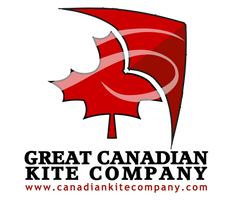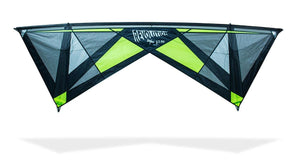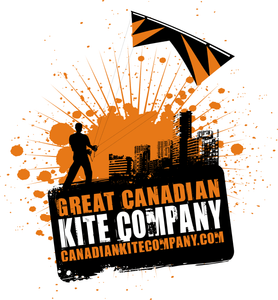Tied to the Sky
Revolution Kites :: The Story
This post is all about the history of Revolution Kites. More than kites, this dynamic and innovative company has developed, hands-down, the best quad-line stunt kite on the market. Sadly, often copied, the counterfeits are nowhere near the quality or performance standard of the authentic Rev kites. Not unlike the introduction of dual line stunt kite back in the day, Revolution kites have breathed new vibrancy into a traditional and historic hobby for a new generation of kite enthusiasts.
I have heard it said by some that the quad line kites are difficult to fly but my experience has been the opposite. Teaching many folks to get started with these awesome flying kites is usually done within 20 minutes and the basics are well in hand. Like dual line flying, proficiency and the "cool-ness factor" increase exponentially as you hone your skills. I think the transition is often most difficult for those who have flown dual-line kites for a while because fly quad-line Rev kites is really a different kind of flying - more wrist action and smaller inputs which as you begin to master them unlock the "Holy Sh&$" of how these kites perform!
The following history of Revolution Kites was found on their website written by Joe Hadzicki. Enjoy!

The Revolution sport kite was released at the 1989 KTA Kite trade show in San Diego, California. The kite was in development for about two years prior to that.
The development of the Revolution design began in 1987. I had recently moved back to San Diego from Santa Barbara, California after completing a degree in mechanical engineering and working with an engineering firm there. While driving by the San Diego Bay one afternoon, I noticed a big husky guy flying a kite and being dragged across the park! I was so fascinated that I looked into this new sport. I soon found out that the best kites cost up in the range of $200 to $300. I quickly enlisted the fun loving company of my two brothers Jim and David. Within two weeks we had designed and built our own set of power dragging kites! For the next several weeks, we spent our afternoons experimenting with this new hobby of ours! After getting the basic controls of two line flying down, we flew team maneuvers, then we flew our delta kites with long flowing tails, then we stacked the kites, then we got kind of bored.
I’m always looking for ways to improve things, and it seemed to me this kite could use some improving! Primarily, better landing abilities!
Several months later I woke up one morning with a completely new approach to the design problem. I decided to approach the kite from an airplane control perspective as opposed to a kite approach. By controlling each wing independently from a flap or aileron design we could redirect the air flow to cause forward or reverse flight. Within two weeks we had a working model that far surpassed our wildest dreams! Far beyond our main goal of being able to back down and land, this new revolutionary kite was capable of instantaneous stopping, reverse flight in any direction, full speed control in both forward and reverse flight, and propeller like spins! The most impressive fact was that these characteristics are inherent to the basic design and therefore do not take hours and hours to learn complicated techniques.
Although precise accurate control takes practice, backing down to land takes nothing more than a simple rotation of both wrists!
Since the initial design of the Revolution I had a nine-foot wingspan, structural integrity quickly became an issue. Fiberglass was too flexible and heavy. The high stiffness aluminum used in the arrow shaft industry works well but begins to bend to shape within an hour or so of flying. My younger brother David just happens to be a pro rated golfer with a lot of connections in the golf industry including access to the graphite shaft design team at Aldila, who at the time was the worlds’ leading graphite golf shaft manufacturer. Within six weeks or so we had designed the ideal shaft for our Rev I (Neos Omega) kite.
With eighty kites built and two days to go until the international kite trade show in San Diego, Aldila gave us the bad news that they wouldn’t be able to manufacture the shafts for us due to other production obligations.
The Revolution design was an instant show stopper at the convention, selling out in the first hour followed with orders for 400 more! We had a wall of people, three deep for three days placing orders.
On Saturday, the kite demonstration day, we had store retailers crowded around with three to six kites under their arms waiting for a lesson. With this information, they would be able to go back to their stores and amaze all their customers, therefore selling thousands of kites! ….. Wrong! We gave people the basic lesson, telling them, thumbs back flies the kite up, left thumb forward turns left, right thumb turns right. Both thumbs forward, backs the kite down. The fact that this method of flying was completely alien to them (no pulling motions), along with the highly sensitive controllability, made the Revolution overwhelming. Add the fact that we had virtually no experience teaching people to fly added to the confusion. It seemed so easy to us! Thumbs back. Left thumb, right thumb, thumbs forward!! The stores had demonstration videos showing performance, but no technique. Only hard-core enthusiasts would dare accept the Revolution challenge!
Although selling the kites complete with a training video was the original plan, it had been dropped due to advice from store retailers that the cost would be prohibitive. After a couple months of frustration from new Revolution fliers and retailers, we began including the training videos with each Revolution sold. We instantly noticed the difference! New fliers that used to take two weeks to get the basics would now buy the Revolution, watch the training video that night, and learn the basic flying skills by the next day! My brother Jim, over the next couple years was successful in incorporating quad line flying into the international competitions including precision, ballet and team events. From the beginning and through the present virtually all quad line events are dominated by the Revolution design.
The original Revolution I design is extremely stable and is the choice for large stacks but is considered slow by today’s standards. The Rev II is fast and somewhat “twitchy”. I enjoy it most in high winds (12 mph and above) on a 100-foot line set, which makes the flying fast and furious! Forget precision! The Rev 1.5 debuted in 1995 and is by far the favorite of both competition fliers and competitors alike. At a wingspan of 7.5 feet, it has great stability similar to the 9-foot Rev I with a lot of the instant quickness of the 6-foot Rev II. The Speed Series, which debuted in 1998, introduced a new aspect to the Revolution design. With the 4-strut support of the tighter sail, the Revolution Shockwave and Supersonic reach speeds to 70 mph! That’s twice the speed of a standard Rev 1.5! In fact, the Speed Series can fly faster backward than a 1.5 can fly forward!
 In 2001 we introduced the Revolution Blast. With a wingspan of 9.5 feet and a longer chord, this design resulted in significant power and improved stability over the standard Speed Series design. Introduced in 2003 is the Super Blast. With approximately 30% more sail area than the Blast this is a true buggy kite in winds above 12 mph. The up wind performance is unbelievable! One of the greatest advantages of all the Speed Series kites is the ability to instantly dump 90% of the power by simply rolling the thumbs back! This is extremely useful in all power kiting conditions.
In 2001 we introduced the Revolution Blast. With a wingspan of 9.5 feet and a longer chord, this design resulted in significant power and improved stability over the standard Speed Series design. Introduced in 2003 is the Super Blast. With approximately 30% more sail area than the Blast this is a true buggy kite in winds above 12 mph. The up wind performance is unbelievable! One of the greatest advantages of all the Speed Series kites is the ability to instantly dump 90% of the power by simply rolling the thumbs back! This is extremely useful in all power kiting conditions.
In 2007, we worked with John Barresi to develop the incredibly popular B-Series. Built in the same 1.5 size class as our SLE and EXP, the B-Series incorporated John’s extensive experience as an international competition and performance pilot to provide some of the same advantages to recreational fliers such as the ability to adjust tuning for personal taste, and mulitiple frames to both expand the kite’s wind range and provide the right amount of competition quality precision.
In 2009, award-winning kitemaker Bazzer Poulter joined in our design efforts with the B-Series PRO – utilizing premium PC31 Icarex fabric, added reinforcements and custom colors for every sail panel. The PRO series went on to become the#1 choice for competitive and hard core recreational pilots all over the world.
Continuing to innovate in 2010, Bazzer Poulter worked closely with John Barresi and their iQuad teammates to develop the B-Series Zen. This design utilized a larger sail area, special bridle and framing for extreme ultralight conditions.
In 2011, we introduced a Rev II sized version of the B-Series called the B2 (faster and more responsive), as well as a full sized version of the B-Series PRO called the Xtra Vent for extreme high wind conditions.
Thank you again for all your interest and support over the years. We couldn’t do it without you. I hope kites has brought you as much fun and enjoyment over the years as it has us.
In 2010, all three Hadzicki brothers were inducted into the World Kite Museum Hall of Fame.
New York Minute (NYM) - 2014 saw the introduction of the New York Minute kite. An exciting new look with a 25 panel sail, new logo, and a folded ‘No Fray’ leading edge, this is one of our smoothest flying sails yet. Built with the best American made, new generation carbon fiber- our highest performing “Green Race Frame” comes standard in this exceptional sail. Innovative venting provides a selection of vent sail designs for almost every wind condition.
Reflex - New for 2016 the Reflex is a unique Rev design that is super stable and boasts a larger sail area. With impressive light wind flying and in winds over 12 kph deliver more power, more fun. Almost like getting 2 kites in One Reflex. Learn More

For the history of the specific models and framing, check out John Mitchell's website Revolution Kite History. This Rev enthusiast has put together a really impressive site in homage to an amazing kite.
Extended leaders on B-Series Rev Kite Handles
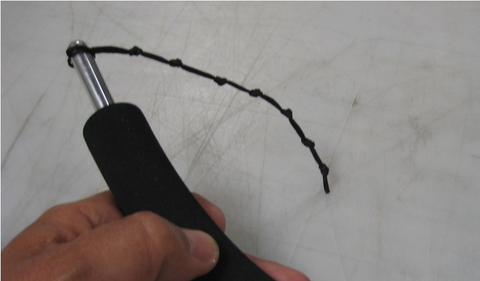 If you haven't tried a Revolution kite - you really have to take the plunge! Revolution kites are one of the most dynamically expressive and interactive sport wing kites you can enjoy today! If you have, you know the thrill first hand and are at work studying the master flyers and tuning your kites and accessories for your personal flying preferences.
If you haven't tried a Revolution kite - you really have to take the plunge! Revolution kites are one of the most dynamically expressive and interactive sport wing kites you can enjoy today! If you have, you know the thrill first hand and are at work studying the master flyers and tuning your kites and accessories for your personal flying preferences.
You also know that Great Canadian Kite Company is hands down one of the best Canadian sources for Rev kites and accessories including lines, custom handles, frames and replacement parts - all at competitive prices with great personalized service!
B-Series flyers will recognize the extended leaders on their handles but for those of us flying 1.5's and other Rev kite packages the extended leaders may be new to us.
The extended leaders replace the top leaders on your flying handles. They are almost 2 times longer and have a series of knots along the length of it. These make for a series of points to connect your flying line to the handles. Each point alters the aspect of the wing (kite) in effect adding or reducing brake. This ideally helps tune our kites not only for the conditions but also our flying preferences and abilities.
We had time to spend with the Master himself, Jon Baressi and among other things he shared his tuning tip for new fliers on B-leaders.
"Start at the end knot, try to launch, bring in one knot at a time until you can launch. Every couple months, do the same approach again and as they get better, their "happy knot" will be further and further out."
It is a very simple and practical approach and with practice your skills will improve 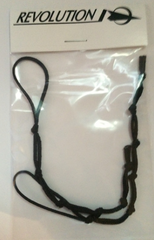 dramatically. When we teach people to fly Revolution kites we like to use handles with extended leaders because we find it increase flyer success much faster. The sooner our students experience success with their kites, the sooner they're tearing up the sky - with a big grin on their face!
dramatically. When we teach people to fly Revolution kites we like to use handles with extended leaders because we find it increase flyer success much faster. The sooner our students experience success with their kites, the sooner they're tearing up the sky - with a big grin on their face!
If you have a set of handles with the normal leaders, not to worry. We stock extended leaders here at the Great Canadian Kite Company. The are so easy to install! You may want to consider including those new leaders with a new Revolution kite as well!
Kites for Father's Day - June 19

Father's Day is just around the corner, but it's not too late to get the special dad in your life a gift that will thrill!. Kites are a fantastic way to get some fresh air, fly stress away and have fun! Whether he is tearing up the sky with a Stunt Kite or chillin' with a Single Line Kite dancing on the wind, are great fun for the whole family!
We have a wide selection of quality made, great flying single line kites for almost any taste!. Easy to fly kites in a variety of shapes, sizes and designs make single line kites a great choice for family fun and relaxation!
Our Stunt kites will Thrill!! Stunt kites allow the flyer to become a pilot as they take control of the kite lines; fly loops and spins, and with practice, you can learn some jaw-dropping kite tricks. Stunt kites are a great way to relax and enjoy the outdoors.
Great Canadian Kite Company is your full service Kite Shop serving Canada and  beyond from Alberta. Check out our selection of quality kites in our online kite shop. Quality Kites, selection and top notch service and support before AND after your kite purchase!
beyond from Alberta. Check out our selection of quality kites in our online kite shop. Quality Kites, selection and top notch service and support before AND after your kite purchase!
Spectra Kite Flying Line - Stunt Kites
 Kite line is an important asset for every kite, especially performance stunt kites. Not all line is created equal! The old adage "You get what you pay for" is true with kite line.
Kite line is an important asset for every kite, especially performance stunt kites. Not all line is created equal! The old adage "You get what you pay for" is true with kite line.
For example, there is a big difference between generic spectra line and Shanti. Shanti is a premium quality because of the fibre quality, braiding and fibre treatment which reduces drag and friction! This means longer kite line life and better kite performance.
Since 1974, Shanti has led the world in the development of kite lines, spools and Winders. In 1985, Shanti invented Speed-line, the worlds first spectra kite line. Speed line has been copied by nearly every kite company in the world and it has been widely used in the sport fishing industry.
To make Spectra suitable for fishing line, companies began coating the line to make it easier to handle, but ironically for the kite flyer coating the line actually increased friction! In past 10 years kiteflyers have grown accustom to coated flying lines and some prefer the feel. During this time the quality of coating has improved significantly and in 2009, Shanti began working with engineers to produce a coating that was specifically designed for kite flying not fishing. This new neon yellow coating uses a polymer-alloy which bonds to the fibres and protects them from damage while remaining slippery.
easier to handle, but ironically for the kite flyer coating the line actually increased friction! In past 10 years kiteflyers have grown accustom to coated flying lines and some prefer the feel. During this time the quality of coating has improved significantly and in 2009, Shanti began working with engineers to produce a coating that was specifically designed for kite flying not fishing. This new neon yellow coating uses a polymer-alloy which bonds to the fibres and protects them from damage while remaining slippery.
The new coating allows Shanti to work with some new high modulus polyethylene (HMPE) fibres. “High modulus” is a comparative term which simply refers to the fibres strength to weight ratio. High modulus fibre is stronger and lighter than low modulus fibre.
The new line from Shanti - Skybond - has the highest modulus rating of any kite line they have tested. They explain a 100lb/test Skybond line is thinner than 90 lb/test Spectra, but is 10% stronger, costs almost the same! Bonus!
Is Skybond better than Shanti’s Speedline? Nope. This is the classic oranges versus apples question. Speedline has a soft finish. It is more slippery, has less stretch and wears 3 to 5 times longer than other high performance lines. But for flyers who like coated lines, the new Skybond is as revolutionary as the original was 32 years ago. Skybond is also made in the USA.
Info: courtesy of Shanti Kite Company
